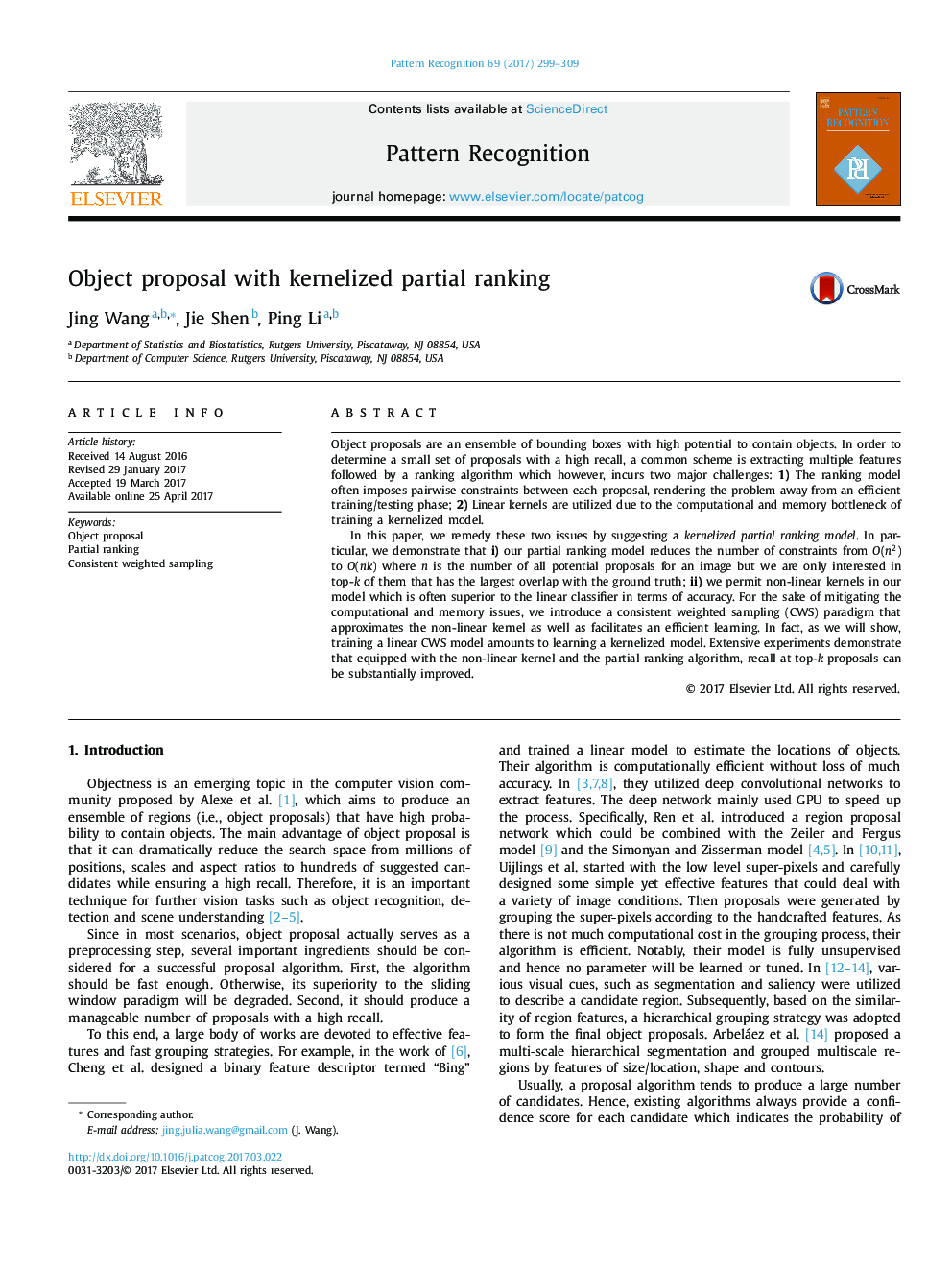| Article ID | Journal | Published Year | Pages | File Type |
|---|---|---|---|---|
| 4969688 | Pattern Recognition | 2017 | 11 Pages |
Abstract
In this paper, we remedy these two issues by suggesting a kernelized partial ranking model. In particular, we demonstrate that i) our partial ranking model reduces the number of constraints from O(n2) to O(nk) where n is the number of all potential proposals for an image but we are only interested in top-k of them that has the largest overlap with the ground truth; ii) we permit non-linear kernels in our model which is often superior to the linear classifier in terms of accuracy. For the sake of mitigating the computational and memory issues, we introduce a consistent weighted sampling (CWS) paradigm that approximates the non-linear kernel as well as facilitates an efficient learning. In fact, as we will show, training a linear CWS model amounts to learning a kernelized model. Extensive experiments demonstrate that equipped with the non-linear kernel and the partial ranking algorithm, recall at top-k proposals can be substantially improved.
Keywords
Related Topics
Physical Sciences and Engineering
Computer Science
Computer Vision and Pattern Recognition
Authors
Jing Wang, Jie Shen, Ping Li,
